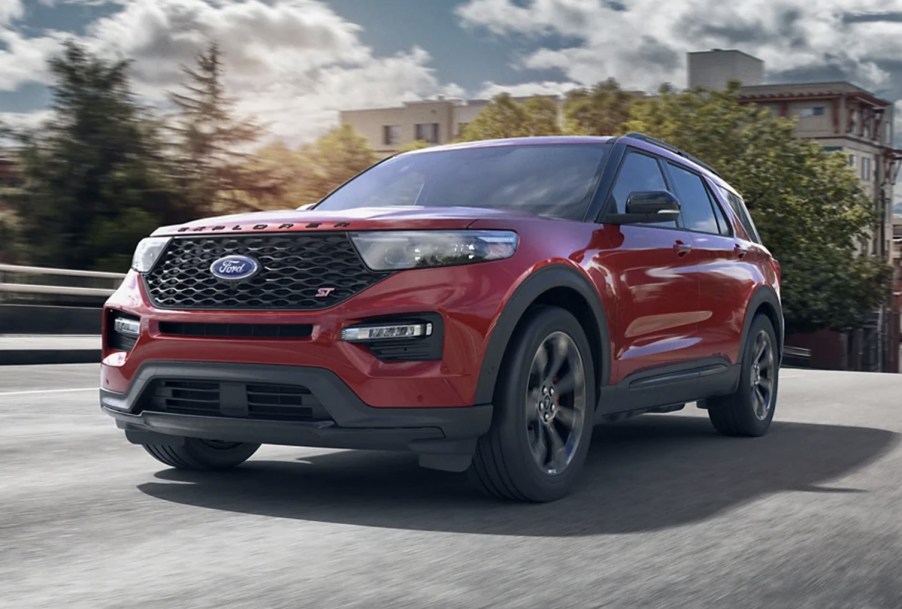
Is the Ford Explorer Losing Ground in the Midsize SUV Segment?
Ford has a lot of iconic cars that have been on the market for years, there’s no better example of that than the Explorer. It competes in the midsize SUV segment, and it’s been one of the best-selling SUVs in its segment for a while now. That being said, the midsize SUV segment is growing, and possibly due to the new competition, the Ford Explorer’s sales are dropping.

The Ford Explorer’s sales have stagnated
Ford introduced the Explorer in 1990, and its sales peaked at around that time as well. Ford was selling over 400,000 units a year of the Explorer in the late ’90s and early 2000s, but things took a change during the middle of the 2000s. The economy collapsed and gas prices were high, so large SUVs like the Explorer weren’t favored anymore.
According to data from Ford Authority, sales have recovered since then, but they’re still a shadow of the Explorer’s glory days. Ever since 2014, Ford has sold about 200,000 units per year. In 2017, the automaker sold just over 238,000 units of the Explorer, and this was the SUV’s most recent high in sales. Interestingly enough, despite the start of the pandemic and the global supply chain crisis that came with it, 2020 was a good year for Explorer sales.
Ford moved 226,000 units of the SUV in that year, which was a significant increase from the year prior. That being said, sales have slumped since then. In 2021, Ford sold about 220,000 units, and in 2022, the automaker only sold 208,000 units. Compared to the last decade, those sales numbers are not that bad, but it does show that Explorer sales have stagnated.
The supply chain crisis is a likely culprit
The supply chain crisis affected the whole world, and Ford was not a stranger to it. Due to a lack of parts, especially semiconductor chips, Ford was forced to cut production on several models. Ford, like many other automakers, also prioritized chips for its most popular models. The Explorer was one of the models that were affected by this slowdown, and that had some additional effects.
Because there were fewer cars rolling off the assembly lines, prices for the cars that did end up on a dealership lot skyrocketed. This caused car shoppers to be more strategic about which cars they bought, and it often meant going for a used car or a smaller car. A brand-new 2023 Ford Explorer starts at about $37,000, so it’s not surprising that some potential owners chose a cheaper car instead.
New rivals in the segment may also explain why the Ford Explorer’s sales have dropped
Supply chain issues might explain the Ford SUV’s most recent drop in sales, but it doesn’t explain why the Explorer’s sales have stagnated at around 200,000 units a year. That’s still a lot of cars being sold every year, but the midsize SUV segment is growing, so in theory, the Explorer’s sales should grow as well. In fact, Ford gave the Explorer a redesign for the 2020 model year in order to help it compete against its new rivals.
Based on the sales data, the redesign helped, but the Explorer’s rivals are still gaining ground. One of the Explorer’s newest rivals is the Kia Telluride, and it only debuted in the 2020 model year. It also has a cousin that’s in the same segment, the Hyundai Palisade.
Both the Palisade and the Telluride have won numerous awards, and as such, their sales numbers have grown a lot since their arrival. Undoubtedly, newcomers like the Kia and the Hyundai are taking market share away from the Explorer.


